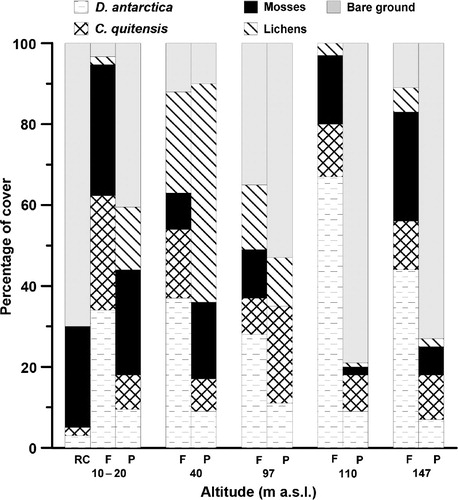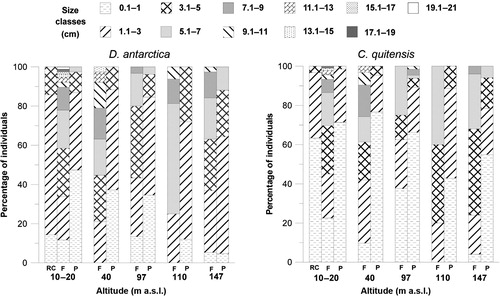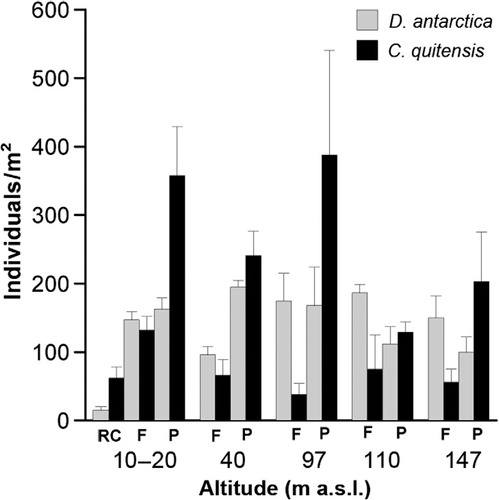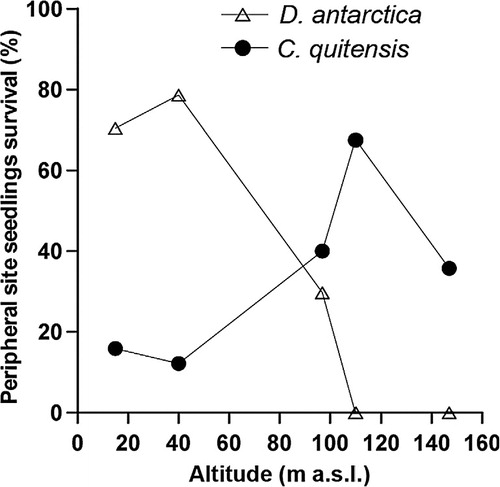Figures & data
Fig. 1. Distribution and abundance of Deschampsia antarctica and Colobanthus quitensis in the area of the Spanish Antarctic base (BAE) Juan Carlos I on Livingston Island, South Shetland Islands, Antarctica. The locations of the studied samples are shown. The location of a recently colonized (RC) site is indicated near Española Cove (Caleta).

Table 1. Characteristics of the flat sites (F), peripheral sites (P) and a recently colonized site (RC) along the altitudinal gradient in the study area.
Table 2. Estimation means of ages (years) of Colobanthus quitensis cushions with different diameters at two altitudes.
Fig. 2. Percentage cover of Antarctic native vascular plants, mosses, lichens and bare ground at flat sites (F), peripheral sites (P) and a recently colonized site (RC) along the altitudinal gradient in the study area.

Fig. 3. Proportion of size classes (plant diameter, excluding seedlings) of Deschampsia antarctica and Colobanthus quitensis in populations at flat sites (F), peripheral sites (P) and a recently colonized site (RC) along the altitudinal gradient in the study area.

Table 3. Mean (±SE) and diameter ranges (in brackets) of Deschampsia antarctica and Colobanthus quitensis diameters (current season seedlings were not considered) at flat and peripheral sites at each altitude.
Table 4. Mean (±SE) of Deschampsia antarctica and Colobanthus quitensis seedlings and individuals per m2, as well as the mean diameters (excluding seedlings) for each type of site (altitude 10–40 m a.s.l.).
Fig. 4. Density of individuals of Deschampsia antarctica and Colobanthus quitensis at flat sites (F), peripheral sites (P) and a recently colonized site (RC) along the altitudinal gradient in the study area (standard error bars shown).


